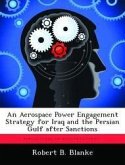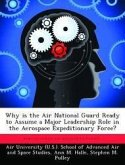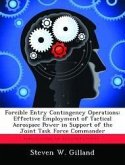The emerging complexities involved in application of the instruments of national power (i.e., political, economic, military, and informational) to achieve national/coalition objectives are such that, as a minimum, these instruments must be better integrated in the future to have a reasonable chance of achieving a desired end state. Technological advances will provide increasing means for aerospace power, in particular, to overcome its most difficult historical constraints--most notably weather and mobile/time-critical targets. However, it is difficult to understand if aerospace power, singly or predominantly, can be counted on to achieve desired objectives in the face of tight political restraints that, at best, reduce efficiency and, at worst, preclude its effectiveness. It is important to understand that the US military has always been constrained and restrained to some degree. In general, the US military will continue to be restrained in a manner inversely proportional to the crisis' proximity to vital national interests. The further the crisis from vital interests, the more restraints, and the greater the premium onstrategy for the airman, soldier, sailor, and Marine. In this context, the airman has the most at stake. Recent events reveal that airmen have not thought of all "how's" of aerospace power employment. Two important areas are "response" and "coercion." To this end, Joint and USAF doctrine, training, and tools can be improved to enhance strategy development and application across the conflict spectrum at the national, joint force, and operational levels in an emerging complex, rapid-pace world.
Hinweis: Dieser Artikel kann nur an eine deutsche Lieferadresse ausgeliefert werden.
Hinweis: Dieser Artikel kann nur an eine deutsche Lieferadresse ausgeliefert werden.







